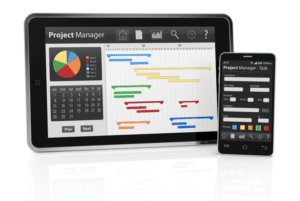Master Budgeting Explained: Component, Examples, and How to Prepare

Yet the selling price must be competitive in the marketplace to make enough sales to fund the other budgets. Streamlining the process and minimizing waste is essential to increasing profits. The operational budget comprises sales, production, direct material costs, direct labor costs, overhead, administrative and cost of goods manufactured.

Develop a Comprehensive Plan

They must also have the ability to use budgeting software and tools effectively. With these skills, the finance team can create an accurate and reliable master budget to guide the business’s financial activities and decision-making process. Beyond the standard components, some organizations use advanced budgeting techniques like scenario analysis to prepare for varying economic conditions. This includes anticipating changes like shifts in consumer behavior or fluctuations in raw material prices.

How Do Businesses Ensure That Their Master Budget Aligns With Their Strategic Goals?
However, many businesses do not have dedicated financial staff or may not have the experience necessary to Grocery Store Accounting create an adequate budget. Setting unrealistic expectations is a common challenge when preparing a master budget. This can happen when a business is overly optimistic about its projected revenue or underestimates its expenses. Unrealistic expectations can lead to a budget deficit, which can be difficult to recover from. This involves aggregating all of the separate budget items and ensuring that they are aligned with the overall goals and objectives of the business.
Facilitates Cash Management
- The overhead budget includes fixed and variable expenses, such as office rent, utilities, and business insurance.
- This is presented in the form of the budgeted income statement representing the income-generating activities carried on within an organization.
- These factors can impact sales, production costs, and other key areas, making it difficult to create accurate projections.
- However, some businesses may need to prepare their budget earlier, especially if they operate in industries with seasonal fluctuations in demand or supply.
- This budget assigns a value to every unit of product produced based on raw materials, direct labor, and overhead.
- The labor and hiring budget will manage employee costs and ensure the company has the necessary staffing levels to meet production targets.
- The master budget is a comprehensive financial planning document used by businesses to consolidate and summarize all subsidiary budgets.
Businesses should ensure that the budgeting process is fair to all stakeholders. After the master budget has been approved, it is important to monitor actual performance against budgeted performance and make adjustments as necessary. If there are significant deviations from the budget, revising it to reflect the new information may be necessary.
What are the Various Steps in Preparation of Budgets
For example, while a manufacturer has a production budget for making goods, a department store has a merchandising budget to buy from its suppliers. Each of these categories has its own budget, with sales being the most important component. A successful budget depends on accurate predictions of future activity within each department or division. While companies with multiple divisions have a more complex master budget, all businesses share the same major components. Both manufacturing and non-manufacturing companies can benefit from a master budget.

- This helps firms to decide on the allocation of assets and resources for business activities wisely, keeping in mind what to reserve for emergencies in the upcoming fiscal year.
- These factors should be considered when developing the master budget, and contingency plans should be developed to mitigate potential risks.
- Budgeting software can help businesses identify areas to reduce costs and increase profitability.
- In addition to the fiscal year, businesses should consider external factors that may impact their financial performance.
- This can occur when businesses fail to consider all the costs of running their operations, such as marketing, maintenance, and employee salaries.
If you compare them with the actual numbers at the completion of each quarter, then you can make any necessary adjustments. You can gather data for a sales estimate by surveying your sales team, analyzing past trends, or consulting with outside research firms. Once you have compiled a sales budget, you’ll need to develop a production schedule, budget for labor, materials, administration, and other costs, and calculate the cost of goods sold. Also add the capital expenditures budget and the cash-flow budget to arrive at a budgeted balance sheet. This information can help businesses identify potential risks, such as decreased sales, increased production costs, or economic downturns.
Master Budget Explained: Component, Examples, and How to Prepare – Conclusion
Managers principal components of a master budget include can use this information to adjust their financial plans and improve performance. The marketing budget outlines the resources required to promote the business’s products or services and reach the target audience. The cash budget is a plan that projects the business’s cash inflows and outflows for the budget period.
Learning Outcomes
The finance team needs to be able to identify potential risks and opportunities and create contingency plans to mitigate risks and capitalize on opportunities. A master budget is a comprehensive financial plan that integrates all lower-level budgets and provides an overview of a business’s financial activities for one Online Accounting year, usually one year. The master budget includes budgets for revenue, expenses, capital expenditures, and cash flow. It serves as a roadmap for the business’s financial activities and guides the decision-making process of managers and executives.
Financial Budget
Stakeholder engagement ensures that businesses are responsive to stakeholder needs and concerns. Businesses must consider the long-term sustainability of their financial objectives. This means considering the impact of their financial decisions on the environment, society, and the economy. Sustainability ensures that businesses act socially responsibly and contribute to the common good.






Leave a Comment